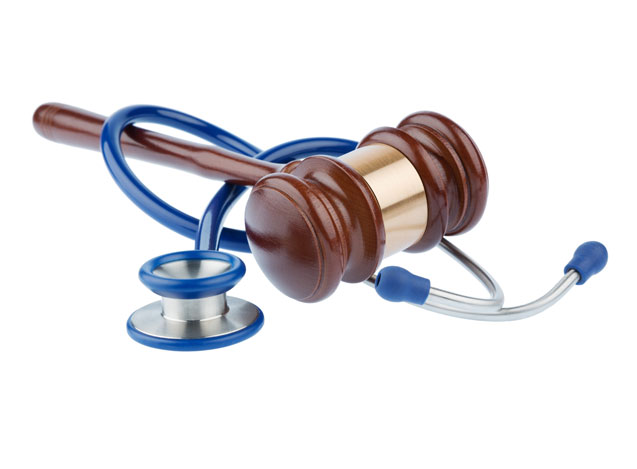Many people are often reluctant to take legitimate malpractice suits to court – this can be for any number of reasons, but one of the more common is simply a lack of understanding what constitutes malpractice in the first place.
What Is Malpractice?
Simply put, malpractice is defined as a lack of responsibility or proper care undertaken by a medical professional that leads to injury or death. Now, obviously, there are extenuating factors in some cases – if you are accidentally hit by a car or subject to a violent crime, for example, a doctor or nurse is not (and shouldn’t be) liable for unforeseen developments. More often than not, malpractice occurs as the result of something going wrong with a planned medical procedure.
- Misdiagnosis – the most common form of malpractice usually results not from an operation at all, but from a misdiagnosis of a condition in the first place. This can be impactful if a condition is not defined or treated in a timely fashion, such as in the case of certain kinds of cancer, diabetes, or other diseases in which delaying treatment can lead to injury or death. It’s important to understand the pressure on medical professionals to come up with proper diagnoses; still, if it can be demonstrated that a doctor was incompetent in interpreting symptoms or a medical condition that would otherwise have been easy to identify by a doctor in a similar situation, there may be grounds for malpractice.
- Medication Errors – perhaps the second most common malpractice suit, these generally occur in two ways. First, a doctor makes an improper or incorrect prescription of a medication that a.) can exacerbate a medical condition or b.) has a negative interaction with another medication or pre-existing medical condition. Secondly, a medication error can occur as a result of improper dosage, such as getting too much or not enough anesthetic, or overdosing on a prescription which can lead to secondary complications.
- Surgery Errors – although less common, these can even more life threatening because of their invasiveness. The most prevalent forms tend to be human error, in which an artery, nerve, or organ is accidentally cut. Surgery errors can also include accidentally leaving something inside the patient, such as medical instruments, or be represented by a failure on behalf of the staff to give necessary post-operative advice. This might include suggestions of what not to do after a critical surgery, or what medications should be taken, and a failure to give this information can also be grounds for malpractice.
- Childbirth – one of the most important moments in the life of a mother is giving birth, but it can also be one of the most vulnerable moments for her. Although it’s extremely unfortunate, a growing number of malpractice suits surround the pre- and post-effects of improper obstetric care. Pre-effects are similar to misdiagnoses, in which a doctor fails to identify or inform parents of pre-existing conditions of the fetus such as preclampsia, anemia, or gestational diabetes, or failing to inform the parents of diseases in the mother which can be transferred to the fetus (these include HIV, herpes, and lupus), all of which can seriously affect the child’s health. Post-effects usually occur during labor and may be interpreted as carelessness on behalf of the physician in delivering the baby. These tend to be failing to anticipate the size of the baby’s head, not noticing when the umbilical cord gets wrapped around its neck or appendages, failing to administer a caesarian if it becomes necessary, or improper use of forceps.
Read our full post about what is medical malpractice.
Standards of Care
Understandably, medical professionals – from surgeons, to nurses, to general practitioners – are undeniably faced with difficult decisions every day, many of them that require quick thinking and which can determine whether or not a life is saved or lost. To that end, the majority of them do the best they can according to strict regulations and protocols, something that is referred to as the standards of care.
All the same, accidents sometimes happen, and while some of these may be understandable and unavoidable, a breach of these standards of care is something that needs to be addressed. Not just in terms of getting justice or compensation on behalf of those affected, but also to ensure that future incidents don’t occur to other patients.
That said, there are a limited number of ways in which to prove malpractice:
- The obligation or responsibility of the doctor must be established
- A standard of care relevant to the event must be identified, as well as how that standard of care was breached
- An establishment of a causal relationship between this deviation and bodily harm
- Proof of the injury itself
When all is said and done, doctors deserve all the accolades they get for putting themselves on the line each and every day to try and save the lives. At the same time, there is an implied relationship of trust between patients and doctors which deserves to be honored. When this relationship is trespassed, and the lifestyle or livelihood of an individual is threatened or put at risk, it is imperative for that individual to seek justice in the form of malpractice, if not for themselves than for the potential injury to others incurred by similar breaches of medical service.

